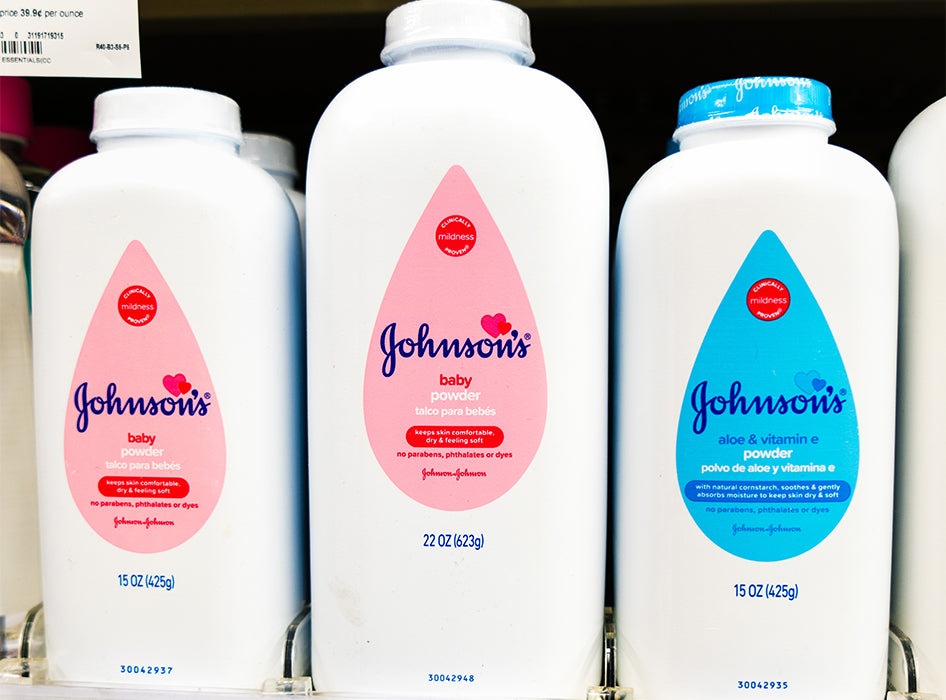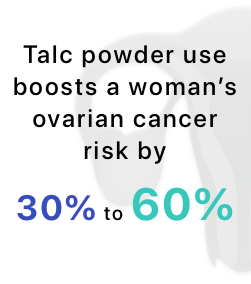Yes, talcum powder can be toxic if inhaled and has been linked to lung problems and cancer. Talc itself is not toxic, but it can be contaminated with asbestos, which is a toxic substance.
Talcum powder, a popular personal care product, has faced scrutiny due to potential health risks associated with asbestos contamination. Asbestos, a known carcinogen, can cause lung cancer and other serious respiratory issues when inhaled. The concern over talcum powder’s safety has led to questions about its toxicity and potential risks.
Understanding the facts and potential hazards associated with talcum powder is essential for making informed decisions about its use. Let’s explore the complexities surrounding talcum powder safety and its potential toxicity.
Introduction To Talcum Powder
Talcum powder, a popular personal care product known for its softness and moisture-absorbing properties, has been used for various purposes throughout history.
Historical Use Of Talcum Powder
Historically, talcum powder has been utilized for its ability to keep skin dry and prevent rashes, making it a common ingredient in baby powders and cosmetics.
Recent Concerns And Controversies
In recent years, concerns have arisen regarding the safety of talcum powder due to potential contamination with asbestos, a known carcinogen.

Credit: herbandroot.com
Composition Of Talcum Powder
The composition of talcum powder is a crucial factor in determining its safety and potential health risks. Understanding the components of talcum powder is essential for evaluating its potential toxicity and impact on human health.
What Is Talc?
Talc, the main component of talcum powder, is a naturally occurring mineral known for its softness and ability to absorb moisture. It is composed of magnesium, silicon, and oxygen, and is widely used in various consumer products due to its absorbent properties.
Potential Contaminants In Talcum Products
While talc itself is not toxic, there is a concern about potential contaminants in talcum products, particularly asbestos. Asbestos is a known carcinogen and its presence in talcum powder can pose serious health risks. The contamination of talcum powder with asbestos can occur during the mining and production process, leading to potential exposure and health hazards for consumers.
Health Risks Associated With Talc
Talcum powder has been associated with health risks, especially when contaminated with asbestos. Inhaling talc dust can lead to serious lung problems and even fatalities. Some studies have suggested a potential increase in ovarian cancer risk for women using talcum powder.
It’s crucial to use caution and consider alternative talc-free products.
Inhalation Dangers
Talcum powder is made from talc, a mineral that can be easily inhaled if used improperly. Inhaling talc can cause wheezing, coughing, chest pain, and difficulty breathing. In extreme cases, talc inhalation can even lead to death. Workers who are regularly exposed to talc dust are at an increased risk of developing serious lung problems and cancer. It is essential to use talcum powder sparingly, and avoid inhaling it.Risks Of Talc Ingestion
Talcum powder can also be harmful if ingested. If consumed, talc can cause abdominal pain, vomiting, and diarrhea. In severe cases, talcum powder poisoning can result in death. It is essential to keep talcum powder out of the reach of children and ensure that it is not ingested accidentally.Link Between Talc And Cancer
There have been concerns about the link between talcum powder and cancer, particularly ovarian cancer. Talc can be contaminated with asbestos, a known carcinogen. The International Agency for Research on Cancer (IARC) has classified talc that contains asbestos as “carcinogenic to humans.” While some studies have suggested a possible increase in the risk of ovarian cancer in women who use talcum powder on their genitals, the evidence is not strong enough to conclude that talcum powder causes cancer. However, it is recommended to use talc-free products as a precautionary measure. In conclusion, while talcum powder is widely used for its absorbent and soothing properties, it is crucial to use it responsibly and avoid inhaling or ingesting it. Additionally, using talc-free products may be a safer alternative.
Credit: www.drugwatch.com
Case Studies And Research
When it comes to the safety of talcum powder, extensive case studies and research have been conducted to determine its potential toxicity and health risks. Scientific studies and notable lawsuits have shed light on the possible links between talcum powder and adverse health effects, leading to significant legal battles and public concerns.
Scientific Studies On Talcum Toxicity
Several scientific studies have explored the potential toxicity of talcum powder, especially when used in personal care products such as baby powder and body powders. Research has focused on the presence of harmful contaminants, such as asbestos, in talc-based products and their potential impact on human health. These studies aim to provide crucial insights into the safety of talcum powder and its potential risks when used over a prolonged period.
Notable Lawsuits And Their Outcomes
Over the years, there have been notable lawsuits against talcum powder manufacturers, particularly regarding allegations of product contamination and health-related issues. These lawsuits have resulted in significant legal battles, leading to substantial financial settlements and verdicts. The outcomes of these legal proceedings have raised public awareness about the potential health risks associated with talcum powder use, prompting further investigations and consumer concerns.
Regulatory Actions And Bans
Regulatory actions and bans related to talcum powder have been the subject of significant attention due to concerns over potential health risks associated with its use. Several regulatory measures and product recalls have been implemented to address these concerns.
Johnson & Johnson’s Product Recall
Johnson & Johnson, a leading manufacturer of talcum powder products, faced regulatory scrutiny after it was discovered that their talc-based powders contained asbestos, a known carcinogen. This led to a series of product recalls and legal actions as the presence of asbestos posed serious health risks to consumers. The company’s talc-containing products were banned in several regions due to the asbestos contamination.
Talc Regulations Around The World
Talc regulations vary across different countries and regions. In the European Union, the use of talc in certain consumer products has been restricted due to concerns over its safety. Additionally, some countries have imposed bans on talc-containing products to protect public health. These regulatory measures aim to mitigate the potential risks associated with talcum powder use and ensure consumer safety.

Credit: chemical-free-life.org
Alternatives To Talcum Powder
Concerns about talcum powder toxicity have led to an increased interest in talc-free alternatives for personal hygiene. Many are opting for natural alternatives like cornstarch or arrowroot powder, which are considered safer options. These alternatives provide similar benefits without the potential risks associated with talcum powder.
Alternatives to Talcum Powder Talcum powder has been used for decades as a way to keep skin dry and prevent rashes, but recent concerns about its safety have led many people to seek out alternative products. Fortunately, there are plenty of natural and safe substitutes for talcum powder that can still provide the same benefits without the potential health risks. Natural and Safe Substitutes Cornstarch is a popular alternative to talcum powder, as it is naturally absorbent and can help keep skin dry and free from irritation. Arrowroot powder is another option that can provide similar benefits. Both of these powders are free from the potential contaminants found in talcum powder and are safe for use on all skin types. Baking soda is also a natural alternative that can help absorb moisture and prevent rashes. It can be used as a powder or mixed with water to create a paste that can be applied to the skin. However, it is important to note that baking soda can be abrasive and may irritate sensitive skin. Kaolin clay is a gentle and natural alternative that can help absorb moisture and soothe irritated skin. It is commonly used in skincare products and is safe for all skin types. How to Choose Talc-Free Products If you prefer to use talc-free products, it is important to read the labels carefully and look for products that specifically state they are talc-free. Look for products that contain natural alternatives like cornstarch, arrowroot powder, or baking soda. It is also important to choose products that are free from other potentially harmful ingredients like parabens, phthalates, and synthetic fragrances. Choosing products made from natural and organic ingredients can help ensure you are using safe and healthy products on your skin. In conclusion, while talcum powder has been a popular choice for many years, there are plenty of natural and safe alternatives that can provide similar benefits without the potential health risks. By choosing talc-free products and using natural substitutes, you can keep your skin dry, comfortable, and healthy.Frequently Asked Questions
Is Talcum Powder Safe To Use Now?
Yes, talcum powder is safe to use now. Recent formulations are asbestos-free and deemed safe for regular use.
Is Talcum Powder Poisonous?
Talcum powder can be harmful if swallowed or inhaled, potentially causing serious health issues.
Why Was Talcum Powder Banned?
Talcum powder was banned due to contamination with asbestos, a cancer-causing mineral. Asbestos can irritate tissue linings and lead to serious health issues when inhaled or ingested. This contamination prompted the ban on talc-containing products in the European Union.
Is Talcum Powder Carcinogenic?
Talcum powder is not proven to be carcinogenic. Some studies suggest a potential increase in ovarian cancer risk for women using talcum powder, but evidence is insufficient to confirm a direct link. Use caution with talcum powder to avoid inhalation.
Is Talcum Powder Safe For Daily Use?
Talcum powder can be safe when used appropriately for personal hygiene.
Conclusion
The potential toxicity of talcum powder arises from possible asbestos contamination. It is crucial to use caution, especially when inhaling or ingesting the powder. Opting for talc-free alternatives may be a safer choice to avoid any potential health risks associated with talcum powder.

